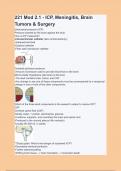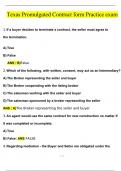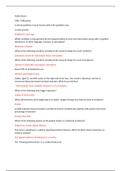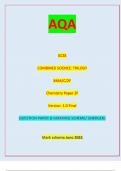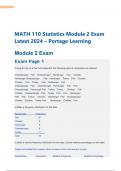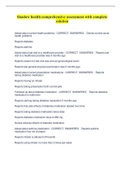Prüfung
221 Mod 2.1 - ICP, Meningitis, Brain Tumors & Surgery Questions with 100% Actual correct answers | verified | latest update | Graded A+ | Already Passed | Complete Solution
- Kurs
- Hochschule
221 Mod 2.1 - ICP, Meningitis, Brain Tumors & Surgery Questions with 100% Actual correct answers | verified | latest update | Graded A+ | Already Passed | Complete Solution
[ Mehr anzeigen ]
